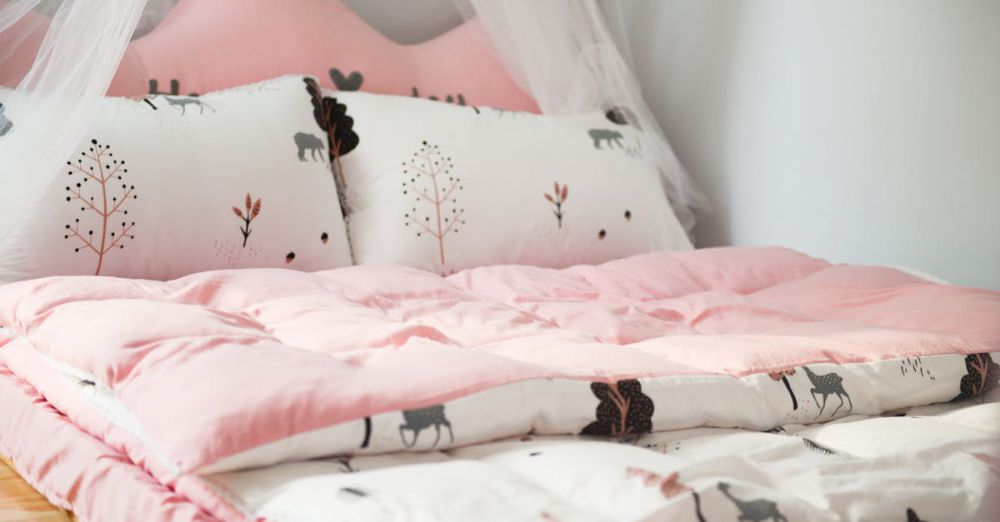How to Choose Hypoallergenic Bedding
Choosing the right bedding can significantly enhance your sleep quality and overall well-being, especially if you have allergies or sensitivities. Hypoallergenic bedding is designed to reduce the risk of allergic reactions by minimizing exposure to common allergens like dust mites, mold, and pet dander. With the right information, selecting hypoallergenic bedding can be a straightforward process.
Understanding Hypoallergenic Materials
Hypoallergenic bedding typically consists of materials that are less likely to trigger allergic reactions. When shopping for bedding, look for products labeled as hypoallergenic. Common materials include cotton, bamboo, silk, and microfiber. These fabrics are less conducive to dust mite growth and are often treated to resist allergens. Cotton is breathable and easy to care for, while bamboo is naturally antimicrobial and moisture-wicking. Silk, on the other hand, is luxurious and smooth, making it a favorite for those with sensitive skin.
Opting for Dust Mite Resistant Covers
Dust mites thrive in bedding, making it essential to invest in protective covers. Look for dust mite-resistant encasements for pillows, mattresses, and comforters. These covers create a barrier that prevents dust mites from infiltrating your bedding, thus reducing exposure. Ensure that the encasement is machine washable for easy maintenance. Regular washing of these covers is crucial for keeping allergens at bay.
Choosing the Right Fillings
When it comes to pillows and comforters, the filling materials matter. Synthetic fillings, such as polyester, are often hypoallergenic and less likely to harbor allergens compared to natural fillings like down or feathers. If you prefer natural materials, opt for hypoallergenic down alternatives that are treated to minimize allergen accumulation. Always check the label to ensure that the filling is labeled hypoallergenic for peace of mind.
Prioritizing Washability
Hypoallergenic bedding should be easy to clean. Allergens accumulate over time, so it’s important to select bedding that can withstand regular washing. Look for materials that are machine washable and can endure high temperatures, as hot water is effective at killing dust mites and removing allergens. A good rule of thumb is to wash your bedding weekly to maintain a clean sleeping environment.
Checking for Certifications
When shopping for hypoallergenic bedding, look for certifications that indicate the product meets specific health and safety standards. Certifications such as OEKO-TEX Standard 100 or CertiPUR-US ensure that the materials are free from harmful substances and chemicals. These certifications add an extra layer of assurance that your bedding is not only hypoallergenic but also safe for your health.
Mind the Weave and Thread Count
The weave and thread count of fabric can also influence its hypoallergenic properties. A tighter weave typically prevents allergens from penetrating the material. Look for bedding with a thread count of at least 300 to ensure a dense, protective fabric. However, be cautious—higher thread counts don’t always mean better quality. Focus on the overall material and construction rather than just the numbers.
Assessing Your Sensitivities
Everyone’s sensitivities can vary, so consider your specific allergies when choosing bedding. If you have a known allergy to certain materials, avoid them. For example, if you are allergic to wool, steer clear of wool-filled comforters and pillows. Pay attention to your body’s reactions and be willing to try different materials until you find what works best for your needs.
Exploring Eco-Friendly Options
Many hypoallergenic bedding options also come in eco-friendly varieties. Organic cotton, for instance, is grown without harmful pesticides and synthetic fertilizers, making it a healthier choice for both you and the environment. Eco-friendly bedding not only reduces allergen exposure but also contributes to a sustainable lifestyle. Look for certifications like GOTS (Global Organic Textile Standard) to ensure the bedding meets eco-friendly criteria.
Final Thoughts
Selecting the right hypoallergenic bedding is a vital step towards creating a healthier sleep environment. By understanding materials, prioritizing washability, checking certifications, and being mindful of personal sensitivities, you can make informed choices. With the right bedding, you can enjoy restful nights and wake up refreshed, free from the discomfort of allergens. Prioritize your well-being, and invest in hypoallergenic bedding that suits your lifestyle and needs.







